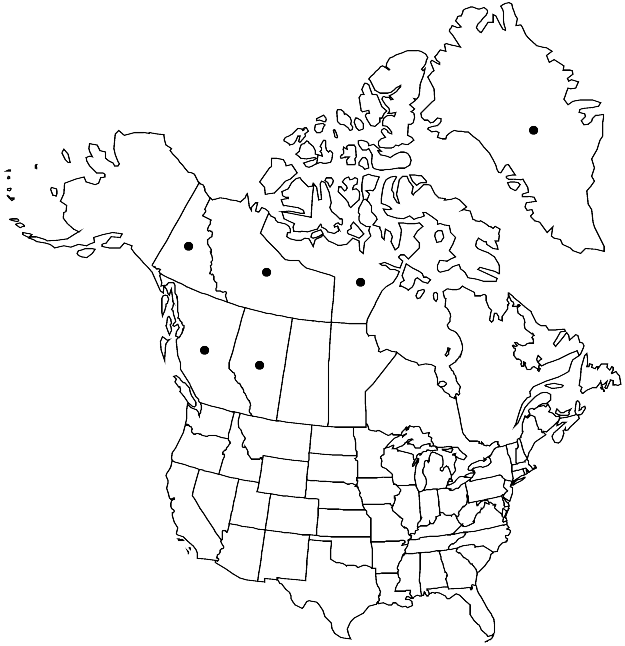Hypnum holmenii
Hikobia 11: 365, figs. 2, 3. 1994.
Plants small, pale green to yellow-green. Stems 4–6 cm, yellowish, ascending to procumbent, regularly to irregularly and densely pinnate, branches 1 cm; hyalodermis present, central strand weak; pseudoparaphyllia foliose, lanceolate. Stem and branch leaves falcate-secund, broadly ovatelanceolate, curved to insertion (sometimes markedly), gradually narrowed to apex, 1.4–1.6 × 0.5–0.6 mm; base not decurrent; margins plane, serrulate distally; acumen slender; costa double, short; alar cells subquadrate to rectangular, gradually enlarged, region distinct, outermost cell-walls thinner, basalmost cells hyaline, walls thinner, cells often tearing away with enlarged stem cortical cells; basal laminal cells shorter, wider than medial cells, yellowish or unpigmented, walls thickened; medial cells (50–) 60–80 × 3–4 µm. Sexual condition dioicous or phyllodioicous; inner perichaetial leaves oblong-lanceolate, margins serrulate distally, apex slender, costa obscure. Seta pale reddish, 1.5–2.2 cm. Capsule inclined to horizontal, redbrown, oblong-cylindric, 1.5–1.8 mm; annulus 1-seriate or 2-seriate; operculum conic; endostome cilia 2 or 3.
Phenology: Capsules mature Jul–Aug.
Habitat: Moist heaths, shrub thickets, spruce forests, calcareous substrates
Elevation: low to moderate elevations (0-1500 m)
Distribution

Greenland, Alta., B.C., N.W.T., Nunavut, Yukon, Europe (Finland)
Discussion
In size and general aspect, Hypnum holmenii often resembles H. plicatulum, but differs in its usually not markedly auriculate leaves and differentiated alar cells. The enlarged alar cells are not differentiated in H. plicatulum. From H. callichroum, H. holmenii differs in its gradually differentiated alar cells (abruptly differentiated in the former). Hypnum hamulosum differs in its strongly hamate stem leaves and less differentiated alar cells. Hypnum holmenii often resembles related species, thus its distribution has been inadequately documented. The plants are shiny and loosely affixed to the substrate; the pseudoparaphyllia margins are irregularly dentate.
Selected References
None.